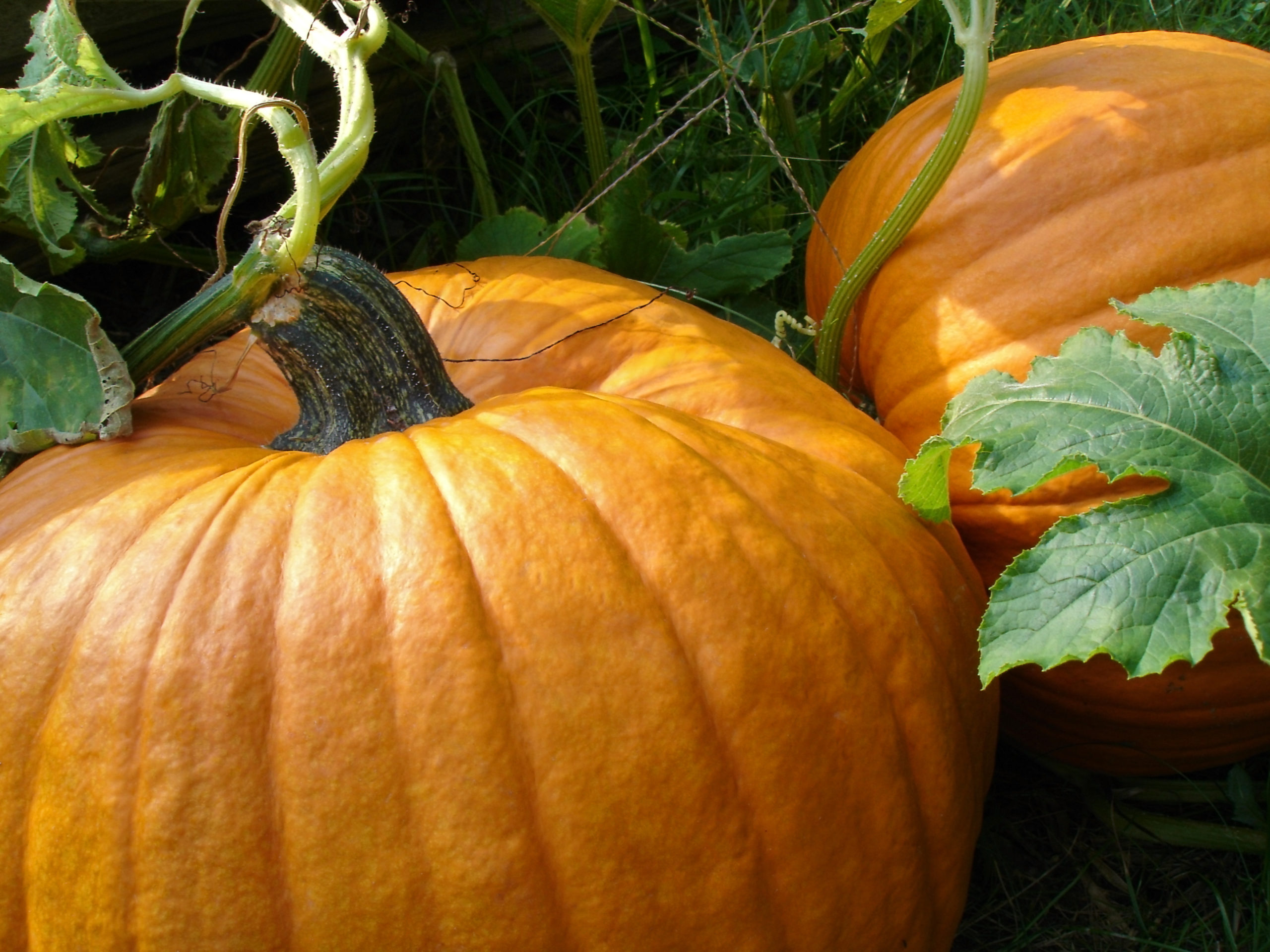6 Tips for Growing Pumpkins

Growing pumpkins in California can be rewarding. Here are 6 tips for growing pumpkin that will maximize your success:
Pumpkin blossoms are not usually harvested or eaten because they tend to be more bitter than zucchini and summer squash blossoms.
Pumpkins resting directly on soil may be prone to rot. Mound mulch under pumpkin fruits or elevate them on a dry surface such as a wooden board, especially from the time they begin to color until maturity.
Length of growing season varies widely among varieties of pumpkin. The “days to maturity” from seed packets gives a basic guideline but is not always accurate due to variations in weather and growing conditions. However, be sure to keep your seed packet as a guide to monitoring when your pumpkins are likely to mature.

This female pumpkin blossom could be removed to encourage the growth of other pumpkin fruit on the same vine
Attentive gardeners may improve their pumpkin harvest by removing blooms and new fruits that appear late in the growing season, and which may not reach maturity before the plant is exhausted. This will help to encourage growth and quality of existing fruits.
Many pumpkin varieties can be picked early and eaten like summer squash but won’t be as sweet or flavorful as after full maturity and curing.
To improve uniform appearance of pumpkin fruits, try rotating the fruits every week or two as they grow. Pumpkin fruits are usually more richly pigmented and darker in color where exposed to sunlight. Exposing all sides of the fruits to the sun will help them to develop uniform color. Pumpkin fruits may be damaged by too much direct sunlight. Rotating pumpkin fruits may help to prevent sunscald. An hour or two per day in the sun may be sufficient to bring the fruits to full color. Squash and pumpkin fruits are particularly subject to sunscald late in the season when plants have died back and leaves no longer shade fruits.
For customized information for growing pumpkin in your area, go to GardenZeus and enter your zip code, then go to pumpkin.
Other articles regarding growing pumpkin:
Timing for Growing Pumpkins in Hot Summer California Areas
How to Fertilize Pumpkins for Maximum Success
Growing Winter Squash and Pumpkins in the California Home Garden

